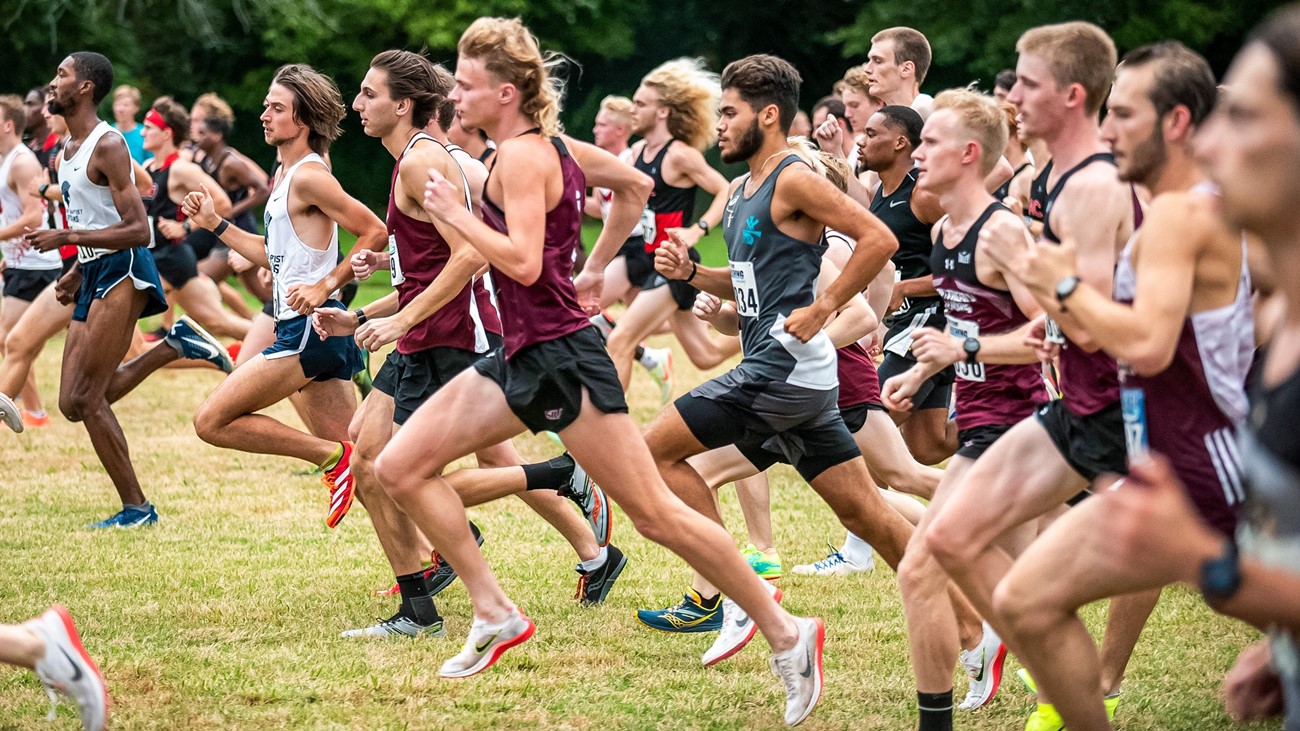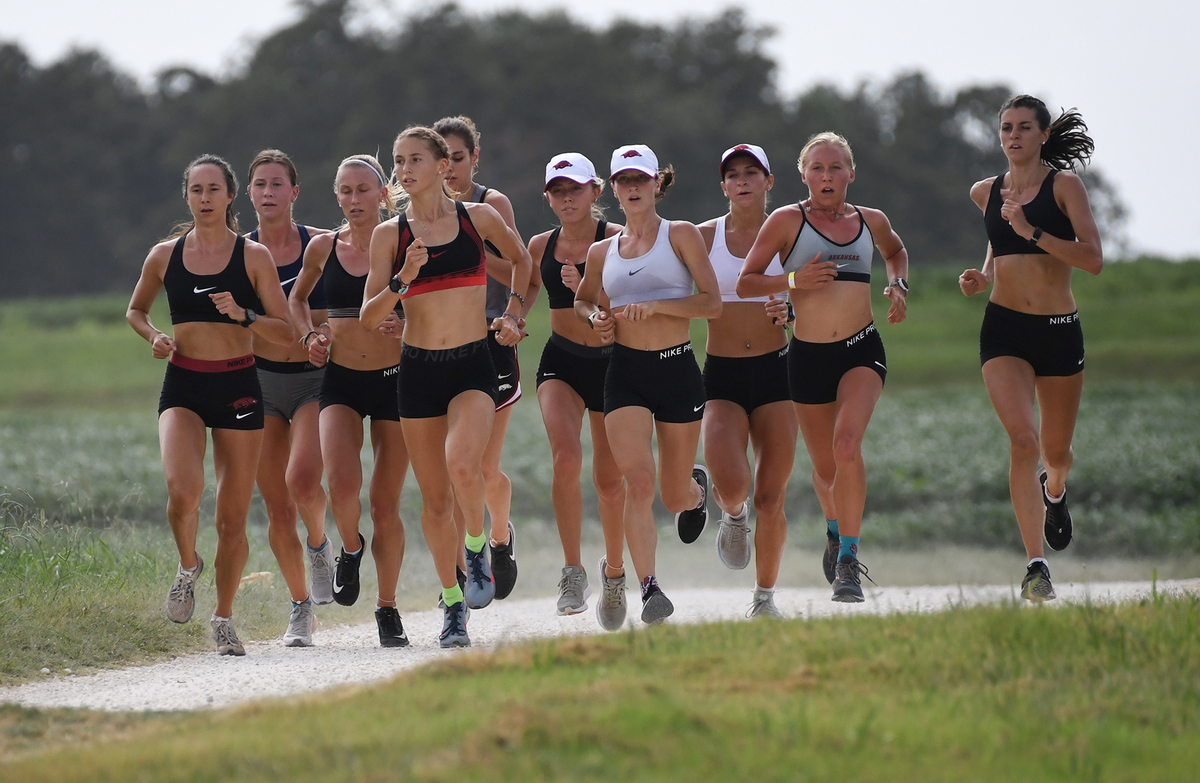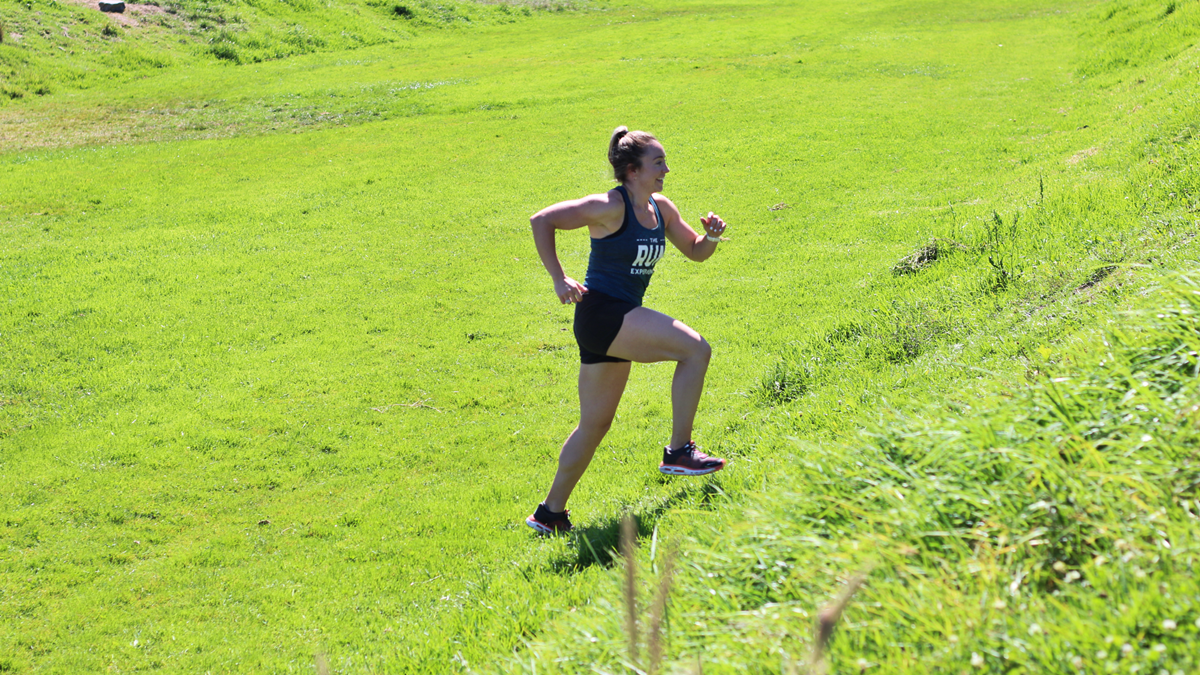

Featured
How Many Miles Does Cross Country Run
Modified: August 21, 2023
Featured article on how many miles does cross country run. Find out the distances athletes cover in this endurance sport and the strategies they employ to achieve their goals.
Introduction
Welcome to the world of cross country running, a sport that tests both the physical endurance and mental tenacity of athletes. Cross country running is a long-distance race, typically held on varied terrains such as grass, trails, or even muddy tracks. It is a sport that requires athletes to cover a specified distance, usually measured in miles or kilometers, in the fastest time possible.
Cross country running is not just about speed, but also about strategy and stamina. Athletes must navigate through challenging courses, tackle hills, and maintain a steady pace to outlast their competitors. Whether you are a seasoned runner or new to the sport, understanding the importance of mileage in cross country is crucial.
Mileage plays a significant role in cross country running as it directly impacts an athlete’s overall performance. By logging many miles during training, runners build their cardiovascular endurance, strengthen their muscles, and develop the mental toughness required to push through the race. The saying, “no pain, no gain,” is particularly relevant in this context.
However, it is important to note that the number of miles run in cross country can vary from runner to runner. Several factors come into play when determining the appropriate mileage for athletes, including age, experience level, injury history, and individual fitness goals. Coaches and trainers work closely with runners to develop customized training plans that optimize mileage and help them reach their full potential.
Understanding Cross Country Running
Cross country running is a unique discipline within the realm of athletics. Unlike track events that take place on a flat, oval-shaped track, cross country races unfold on diverse and challenging terrains. The sport originated in England in the early 19th century and quickly gained popularity worldwide.
The primary objective of cross country running is to cover a specific distance, usually between 3 to 6 miles, in the shortest time possible. Courses are designed to incorporate natural elements such as grass, trails, and hills, offering both physically demanding and mentally stimulating challenges. These varied terrains test an athlete’s agility, endurance, and adaptability.
Unlike track and field events, cross country races require runners to compete not only against other individuals but also against the elements and terrain. The ability to navigate through different surfaces, adjust pace according to the course, and strategize when to conserve energy and when to surge ahead are crucial skills for a successful cross country runner.
Cross country races typically involve a large number of participants. Men’s and women’s teams compete separately, and a team’s score is determined by adding the finishing places of the top members. This team aspect adds another layer of strategy to the sport, as runners not only aim for personal success but also strive to contribute to their team’s overall success.
Furthermore, unlike traditional track events that utilize lanes, cross country running allows for a more open format, giving runners the freedom to choose their path and find the most efficient route. This flexibility adds an element of decision-making and adaptability to the sport, making it more dynamic and unpredictable.
One of the most fascinating aspects of cross country running is its ability to foster camaraderie among athletes. The shared experience of training and competing in challenging conditions creates a bond among runners, transcending individual performance. Teamwork, support, and encouragement among teammates are vital ingredients for success in cross country.
Although challenging, cross country running offers a unique and fulfilling experience for athletes. It combines physical prowess, mental agility, and strategic thinking, making it a truly exhilarating and rewarding sport.
Importance of Mileage in Cross Country
Mileage serves as the foundation for success in cross country running. The number of miles a runner covers during training directly correlates with their endurance, strength, and overall performance in races. It is essential for athletes to understand the significance of mileage and its impact on their ability to compete at a high level.
The primary benefit of logging higher mileage in cross country training is the development of cardiovascular endurance. Endurance is a critical component of the sport, as it determines a runner’s ability to sustain a consistent pace throughout a race. By gradually increasing mileage, runners improve their cardiovascular capacity, allowing them to maintain a faster pace for a longer duration.
In addition to cardiovascular benefits, consistent mileage builds muscular strength and resilience. Running puts significant strain on leg muscles, and by gradually increasing mileage, runners strengthen their muscles and connective tissues, reducing the risk of injuries. Stronger muscles also lead to more powerful strides and propel runners forward more efficiently.
Another advantage of higher mileage is the mental toughness it cultivates. Cross country races are physically demanding and mentally challenging, requiring athletes to push through fatigue and maintain focus. By exposing themselves to longer distances during training, runners develop the mental resilience necessary to overcome physical discomfort and push themselves when it matters most.
Mileage also plays a crucial role in improving running efficiency. As runners accumulate more miles, their bodies adapt to the demands of the sport, refining their running form and technique. Increased mileage allows athletes to fine-tune their stride, cadence, and breathing patterns, ultimately leading to more efficient and economical running.
It is important to note that finding the right balance of mileage is key. While high mileage is beneficial, overtraining can lead to fatigue, increased injury risk, and decreased performance. Coaches and trainers work closely with athletes to monitor their training load and ensure they are gradually increasing mileage in a safe and sustainable manner.
Overall, mileage is an essential aspect of cross country running. It directly impacts a runner’s physical and mental fitness, allowing them to build endurance, strength, and resilience. By gradually increasing mileage and striking a balance with rest and recovery, athletes can maximize their potential and achieve success in the thrilling world of cross country running.
Factors Affecting the Number of Miles Run in Cross Country
The number of miles a runner covers in cross country training can vary based on several factors. Each athlete is unique, and individual circumstances play a significant role in determining the appropriate mileage. Coaches and trainers consider various factors when deciding the number of miles a runner should run to optimize their performance and minimize the risk of injury.
1. Experience Level: The experience level of a runner is a crucial factor in determining the appropriate mileage. Beginners typically start with lower mileage to allow their bodies to adapt gradually. As runners gain experience and their bodies become accustomed to the demands of training, mileage can be progressively increased.
2. Age and Fitness Level: Age and fitness level also impact the number of miles a runner can cover. Younger athletes may have different energy levels and recovery rates compared to older individuals. Fitness level plays a role as well, as fitter athletes may be able to handle higher mileage due to better conditioning.
3. Injury History: Previous injuries influence the mileage an athlete can handle. Those with a history of injuries may need to be more cautious and gradually increase mileage to avoid reinjury. Coaches may adjust training plans and incorporate cross-training activities to protect injury-prone athletes.
4. Time Availability: The available time for training is an important consideration. Athletes with limited training time may have to optimize their workouts and focus on quality rather than quantity. Coaches work with athletes to design training plans that fit their schedules and maximize the benefits of the available training time.
5. Race Goals: The distance of the target race influences the training mileage. Athletes preparing for longer races, such as 10K cross country events, may require higher mileage to build the necessary endurance. On the other hand, athletes focusing on shorter races may prioritize speed work and incorporate lower mileage into their training regimen.
6. Recovery Capacity: Each individual’s recovery capacity is different. While some athletes may recover quickly, others may need more time to rest and recover. Coaches and trainers are mindful of this and adjust the training schedule to allow for adequate recovery between high-intensity workouts and long-distance runs.
It is worth noting that these factors are not mutually exclusive. They often interact with one another, influencing the overall training plan. Coaches and trainers use their expertise to assess these factors holistically and create individualized plans that optimize training mileage for each athlete.
By considering these factors and tailoring the training plan accordingly, runners can strike a balance between challenging themselves and preventing overexertion or injury. Ultimately, it is about finding the right balance that enables runners to reach their full potential while staying healthy and enjoying the sport of cross country running.
Training Techniques and Mileage Recommendations
Training techniques and mileage recommendations play a fundamental role in helping cross country runners reach their peak performance. A well-designed training program incorporates a variety of workouts and progressive increases in mileage to build endurance, speed, and strength. Here are some common training techniques and mileage recommendations followed by many cross country athletes:
1. Long Runs: Long runs are a staple in training for cross country. These runs are typically done at a comfortable pace and gradually increase in distance as the training program progresses. Long runs are essential for building endurance and preparing the body to handle the distances encountered in races. Depending on the athlete’s level and race distance, long run distances may range from 8 to 20 miles or more.
2. Interval Training: Interval training involves alternating between periods of high-intensity effort and recovery. This type of workout helps improve speed, stamina, and lactate threshold. Common interval workouts for cross country runners include repeat 400 or 800 meters at a fast pace with short recovery breaks. The number of intervals and distance covered depends on the athlete’s fitness level and training goals.
3. Fartlek Runs: Fartlek, which means “speed play” in Swedish, is a training technique that involves mixing periods of fast running with periods of slower recovery jogging. Fartlek runs are great for simulating race conditions and developing speed and mental toughness. Athletes can incorporate bursts of speed during their regular runs, alternating between faster and slower paces as they choose.
4. Hill Repeats: Hill repeats are a challenging yet effective training technique for cross country runners. This workout involves running up a hill at a strong effort and then recovering by jogging or walking back down. Hill repeats help improve leg strength, power, and mental resilience. The number of repeats and the steepness of the hill can be adjusted based on the athlete’s ability level.
When it comes to mileage recommendations, there is no one-size-fits-all approach. The recommended mileage varies depending on the athlete’s experience, fitness level, and race distance. Novice runners may start with lower mileage, gradually increasing over time, while more experienced runners may already have a solid base and can handle higher mileage.
As a general guideline, college and elite-level cross country runners often aim for a weekly mileage range of 40 to 80 miles or more. High school runners may target a range of 25 to 50 miles, while recreational runners may aim for 15 to 30 miles per week. These mileage recommendations are not set in stone and should be adjusted to fit the individual athlete’s abilities and goals.
It is essential for athletes to listen to their bodies and not push beyond their limits. Proper rest and recovery are critical in preventing overuse injuries and ensuring optimal performance. Coaches and trainers closely monitor athletes’ progress, adjust training plans accordingly, and encourage open communication to ensure the mileage recommendations are appropriate and effective.
By incorporating a combination of long runs, interval training, fartlek runs, and hill repeats, and following personalized mileage recommendations, cross country runners can enhance their physical endurance, speed, and overall performance. Consistency and gradual progression are key to improving and achieving success in the exhilarating world of cross country.
Monitoring Mileage for Cross Country Runners
Monitoring and tracking mileage is crucial for cross country runners to ensure proper progression, assess training load, and prevent overtraining or injury. By keeping a record of their mileage, athletes, coaches, and trainers can make informed decisions and adjust training programs accordingly. Here are some methods for effectively monitoring mileage:
1. Running Logs: Cross country runners should maintain a running log that records the distance and duration of each run. This log helps track mileage over time and provides valuable information about the athlete’s training progression. It also allows coaches and trainers to review the training history and identify patterns or potential areas of improvement.
2. GPS and Running Apps: Many runners utilize GPS watches and smartphone apps to accurately track their mileage during runs. These devices provide real-time distance, pace, and other performance metrics. GPS technology helps eliminate guesswork and provides precise data for monitoring and analyzing training progress.
3. Training Platforms: Online training platforms and apps specifically designed for runners can provide comprehensive training analysis. These platforms often include features such as mileage tracking, workout scheduling, progress charts, and even personalized training plans. These tools enable athletes and coaches to monitor mileage and training intensity in a structured and organized manner.
4. Weekly Mileage Targets: Setting weekly mileage targets can be a useful tool in monitoring progress and ensuring athletes are gradually increasing their mileage. Coaches and trainers work with runners to establish achievable targets based on their goals, fitness levels, and individual circumstances. By regularly reviewing weekly mileage, adjustments can be made to optimize training load and prevent overtraining.
5. Listening to the Body: While metrics and data are important, it is also essential for cross country runners to listen to their bodies. Monitoring how the body feels and responding to signs of fatigue or excessive soreness is critical for injury prevention. If a runner is consistently feeling overly fatigued or experiencing persistent pain, it may indicate the need for a decrease in mileage or a rest day.
6. Regular Communication with Coaches and Trainers: Maintaining open lines of communication with coaches and trainers is vital for effective mileage monitoring. Regular check-ins allow for discussions about how the training is going, any concerns or issues, and adjustments that may be needed. Coaches can provide guidance and support, ensuring that mileage is appropriately managed and aligned with the athlete’s goals.
By implementing these monitoring methods, cross country runners can effectively track their mileage, gauge their progress, and make necessary adjustments to their training regimen. This active monitoring promotes optimal performance, minimizes the risk of overtraining, and safeguards the athlete’s long-term health and success.
Conclusion
Cross country running is a demanding and exhilarating sport that tests the physical and mental limits of athletes. The importance of mileage in cross country cannot be overstated. By logging higher mileage during training, runners build cardiovascular endurance, strength, and mental toughness, which are essential for success on race day.
Understanding the factors that affect the number of miles a runner should run is crucial in developing an effective training plan. Each athlete’s experience level, age, fitness, injury history, time availability, race goals, and recovery capacity should be considered to determine the appropriate mileage. This personalized approach ensures that athletes maximize their potential while minimizing the risk of injury.
Training techniques such as long runs, interval training, fartlek runs, and hill repeats are commonly used to enhance performance and build the necessary physical and mental qualities for cross country success. Gradually increasing mileage and striking a balance between challenging workouts and adequate rest is key to improving as a runner.
Monitoring mileage is instrumental in assessing training load, tracking progression, and avoiding overtraining. Running logs, GPS devices, training platforms, weekly mileage targets, and listening to the body all contribute to effective mileage monitoring. Regular communication with coaches and trainers ensures that athletes receive the support and guidance necessary to optimize their training.
In conclusion, mileage is the backbone of cross country running. It shapes the endurance, strength, and resilience of athletes. Incorporating appropriate mileage, along with varied training techniques, helps runners prepare mentally and physically for the rigors of cross country races. By understanding the importance of mileage, monitoring progress, and adhering to personalized training plans, cross country runners can unlock their full potential and achieve remarkable accomplishments in this exhilarating sport.









